Condition Monitoring Offers Cost-Effective Entry into World of Industry 4.0
According to a recent IoT For All article by Brian Harrison, “[t]he factory of the future, in which all conceivable devices are connected with their intelligence and autonomy and each plant process is constantly optimized through sophisticated real-time analytics, has long been the utopia of industrial automation.”
After all, what manufacturer doesn’t want to be as efficient and productive as possible? Harrison notes that these new advanced automation technologies “promise to unlock unseen levels of productivity and efficiency while removing the need for humans to carry out many of the more repetitive or labor-intensive tasks required, potentially saving organizations vast amounts of money and time.”
However, all you have to do is look at the current state of modern manufacturing to know that “the idea of the smart factory is not yet a reality for all.” While many manufacturers have embraced new automation technologies, others have yet to do so, citing both the cost of technology and inability to hire skilled workers that know how to use these technologies as reasons.
Harrison acknowledges that “[i]t takes time, planning, and often significant investment to radically modernize an entire plant from the ground up.” But maybe “a radical rebuild is not necessary to start embracing the benefits of Industry 4.0.”
What if, instead, manufacturers started small and built up their capabilities over time? According to Harrison, “[i]ncremental improvements, such as adding condition monitoring capabilities to existing equipment can unlock a vast potential for savings across the areas of efficiency, productivity, and reliability throughout the plant.”
The author argues that manufacturers “can implement condition monitoring without substantially rethinking existing processes, and you can roll it out on a much smaller scale to embrace the efficiency, reliability, and productivity savings promised by Industry 4.0, at a fraction of the cost.”
Doing so “offers greater visibility over running processes. Digital connectivity provides real-time or near-real-time insight into asset health, allowing maintenance teams to focus their efforts where needed and avoid expending resources unnecessarily. It can also prevent large amounts of downtime by flagging and fixing potential issues before they turn into failures.”
Harrison urges manufacturers to “[a]ttach sensors to legacy equipment to measure health, tracking metrics like vibration, temperature, and power signatures for a comprehensive view, avoiding manual component inspection. Measuring and analyzing assets remotely improves plant safety in hazardous areas without endangering personnel.”
Incorporating condition monitoring into manufacturing processes allows manufacturers to transition from reactive maintenance to predictive maintenance. Over time, manufacturers can add more technologies, such as manufacturing execution systems and enterprise asset management systems to more thoroughly take advantage of data being collected.
Harrison concludes that “condition monitoring enables companies to start small, and grow digital capabilities gradually in a more manageable and cost-effective way. This also allows you to prioritize assets in a way that provides the best return on investment. From there, you can expand condition monitoring programs to other operations, and before you know it, much of the plant will be connected.”
Of course, part of the transition to Industry 4.0 has to be upskilling current workers and/or hiring new workers with the skills necessary to operate, maintain, troubleshoot, and repair a wide variety of advanced automation systems. How can manufacturers accomplish this?
Today, more and more employers are looking for workers with industry-standard certifications that prove they have the skills needed. For example, if workers possess a certification from the Smart Automation Certification Alliance (SACA), employers can feel confident they’ve already proven they have the knowledge and hands-on skills needed for working with advanced smart automation technologies. SACA has been hard at work collaborating with industry leaders to develop a wide variety of industry-standard certifications that will help employers find workers who possess the advanced connected-systems skills they need to take their businesses to the next level. Be sure to check out SACA and all it has to offer!
- Published in News
Every Worker is a Tech Worker
Do you remember your days as a student? If you were like most kids, you couldn’t wait to be done with school. No more teachers. No more books. No more exams. No more learning stuff you didn’t care about. Just launch out into the real world and get on with life. That’s what many students can’t wait for.
Well, as it turns out, the real world has some bad news for today’s students. Once they graduate and think they’re done with school, teachers, books, exams, and learning forever, they enter a workplace filled with modern technology that creates a seemingly-never-ending learning curve.
According to a recent Forbes article by Brian Greenberg, “[i]n the ever-evolving landscape of the modern workplace, a new reality [has] emerged: Every worker, regardless of their field, is now a tech worker to some extent. This shift is not limited to the tech industry and IT; it encompasses every sector, ranging from healthcare, education and carpentry to food service, manufacturing and retail. As technology permeates every aspect of our lives, adapting and continually retraining has become paramount.”
The author speaks from experience, noting that “[t]hroughout my career, I’ve had the privilege of working in several industries and many roles. The one constant was that I needed to keep learning along the way. There was always a new process to understand or technology to become familiar with. There was always something new, and as time went on, there was more and more technology to learn.
Could this phenomenon simply be a short-lived trend? Greenberg doesn’t believe so. Instead, he believes “it’s a mirror reflecting how deeply technology has rooted itself in the fabric of our work life. Integrating technology into every conceivable profession signals a departure from the past, where a clear delineation existed between a ‘tech job’ and a ‘traditional job.’”
For example, the author points out that “[e]lectricians, once primarily concerned with wires and circuits, are now at the forefront of installing smart home systems. This requires an understanding of electrical fundamentals, networking and digital connectivity. They are expected to be adept at navigating complex control systems and staying up to date with the latest smart technology.”
How do students prepare themselves for today’s workplace? Greenberg believes “a continuous learning and adaptability attitude is essential. The demand is no longer for workers who can perform a set task. Instead, the emphasis is on those who can learn, unlearn and relearn as technology evolves.”
Moreover, he notes that “[t]his dynamic is not restricted to mastering new software or tools; it also includes understanding the implications of technology on your industry, keeping up with cybersecurity concerns, staying ahead of digital trends, understanding how your data is managed and developing a mindset for innovation.”
Does this sound intimidating? If so, you’re not alone. However, Greenberg believes “seeing it as an opportunity is more productive. Technology can be a potent tool to enhance efficiency, accuracy, creativity and productivity in any job when used effectively. For instance, automation and AI can take over mundane tasks, freeing workers to focus on more strategic, creative aspects of their roles.”
But what if you just want to be a “traditional worker” and not a “tech worker”? In today’s workplace that just might not be possible any longer. The author notes that “[w]herever you look, technology is enhancing jobs…tech literacy has become a fundamental skill, just like reading and writing. People must be familiar with essential tech tools and concepts relevant to their fields and be ready and able to explore new digital avenues as they emerge.”
Fortunately, workers don’t have to meet this challenge alone. According to Greenberg, “[o]ngoing reskilling is a responsibility shared by everyone, employees and employers alike. Companies must provide learning opportunities, time and resources to help their staff keep pace with technological advancements. These could include training programs, workshops, online resources or partnerships with educational institutions.”
As opportunities are made available to them, “workers must embrace their identity as tech workers, regardless of their job titles. This means being proactive in learning new skills, adapting to new tools and being open to how technology can improve their work and lives.”
Greenberg issues “a call to embrace the new realities of the workplace, where technology is not just an enabler but a necessary partner in every career path. We can successfully navigate this new landscape by adopting a continuous learning mindset, seeking opportunities to upskill and leveraging technology to our advantage. The future of work is here, and it’s undeniably tech-centric.”
Is your employer adequately equipping its workers with opportunities to build the tech skills they need to survive and thrive in today’s technology-driven workplace? In addition to upskilling current workers, employers need to ensure that new workers have the hands-on skills they need to succeed.
Today, more and more employers are looking for workers with industry-standard certifications that prove they have the skills needed. For example, if workers possess a certification from the Smart Automation Certification Alliance (SACA), employers can feel confident they’ve already proven they have the knowledge and hands-on skills needed for working with advanced smart automation technologies. SACA has been hard at work collaborating with industry leaders to develop a wide variety of industry-standard certifications that will help employers find workers who possess the advanced connected-systems skills they need to take their businesses to the next level. Be sure to check out SACA and all it has to offer!
- Published in News
Instructor Profile: Maroun Nehme
Maroun Nehme, director of Buena Park High School’s Advanced Robotics and Mechatronics program, started folding SACA into his program shortly after he became the head of it. He said it started off as a way to get something in the hands of students along with their diplomas, but it’s turned into a lot more.
He got his Gold SACA instructor certification and began testing his students for the Gold credentials. After seven students passed the Silver exam, six attempted and passed the Gold exam.
“We became the very first college or high school in California to have Gold Certified students and a Gold Certified instructor,” Nehme said.
He said he wanted to make sure his students got a little recognition, so he began posting their projects and accomplishments on social media.
That’s when his community began taking notice. A councilman for the Buena Park City Council saw the hands-on training in action, and asked Nehme to bring his students to a public meeting to honor them and their work. He also said industry began taking notice and wanted to see how they could benefit from Nehme and his lab.
“Their parents were super stoked and I think it just gives more recognition to the program,” Nehme said. “And now we’re beginning to partner up with some companies that may use my classroom as a training facility for their employees, which is pretty big for a high school.”
He said it was a big deal, especially since he wasn’t sure how to deliver SACA curriculum at first. Nehme said a presentation from Joe Russo at Klein Educational Systems helped him see how to keep things moving. Working with students in pods helped him make sure he could keep 30 students going at once and still give them time to test on the necessary skills.
Watching them gain interest in the first year is huge, he said, and part of that is how the initial curriculum is built.
“I like the 101 curriculum because it gives students a taste of everything,” Nehme said. “It doesn’t go super deep into anything, but it gives them a taste of all these different things, whether it’s electrical, pneumatics or robotics. They go into year two, they’re doing the same thing and they can decide what they want to learn, what they want to pursue.”
He said that gives them opportunity once they graduate outside of just going to a four-year institution. He said it helps motivate students while they’re in high school, and find paths to high-paying careers once they graduate.
“I think one of the roles that SACA fills is provide for not just the students, but their parents, a purpose for them to go to school,” Nehme said. “They would like them to get into some kind of career where they can learn a trade and earn a decent living, especially in Southern California. If a student wants to go into a field, they can stack those certifications and use them to get a job.”
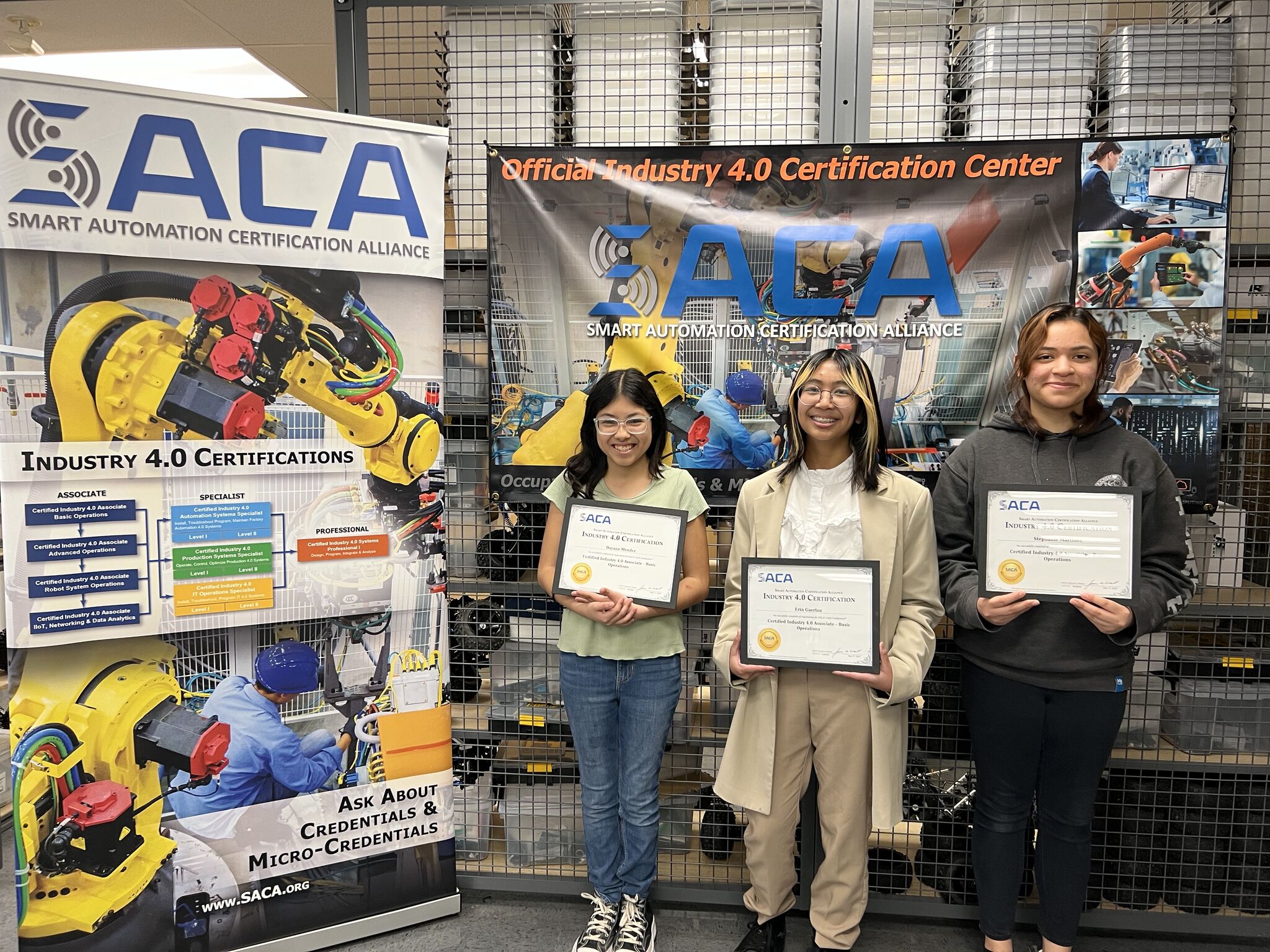
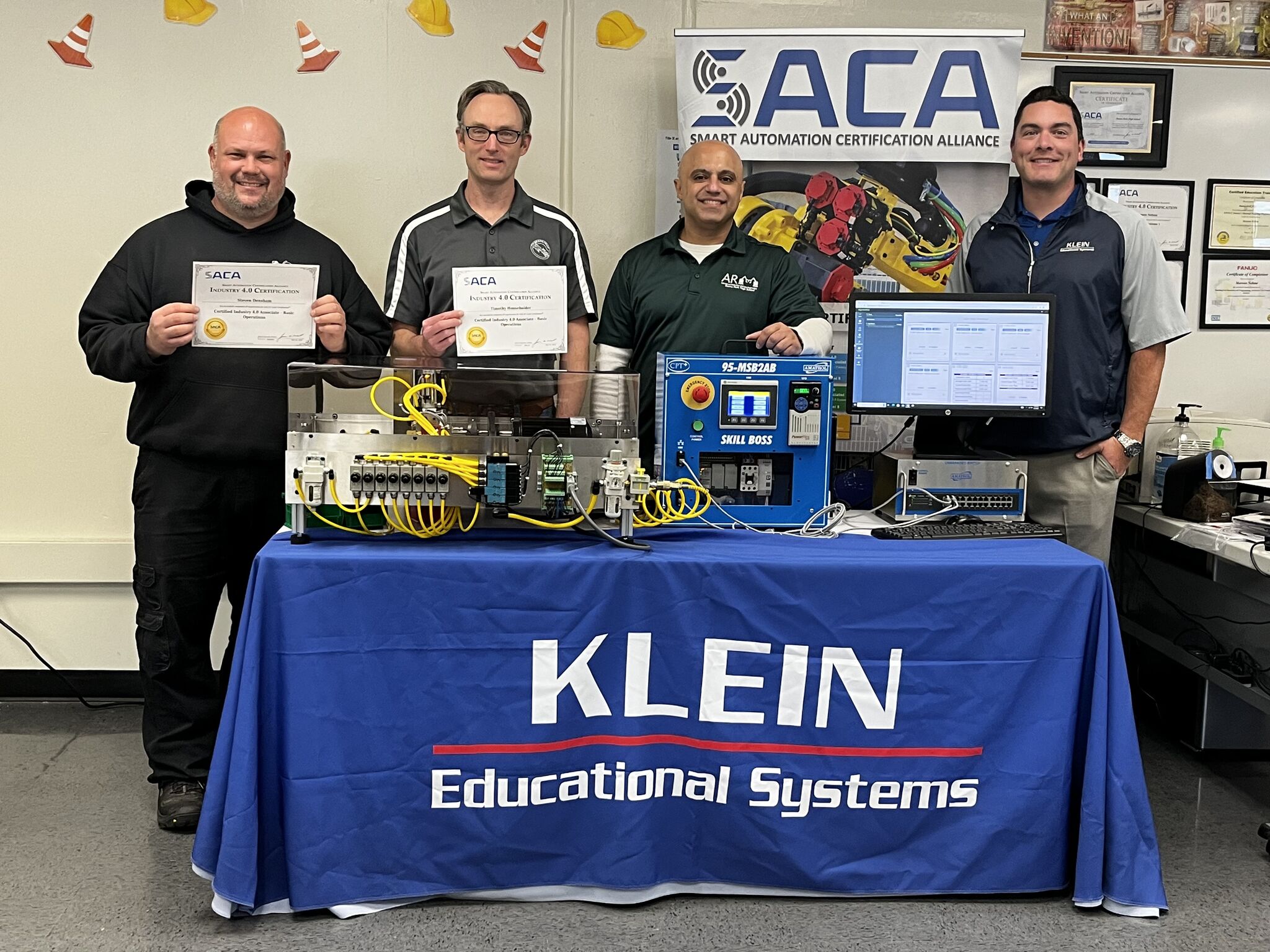
- Published in News, Technology
Believe the Hype: The Current State of Smart Manufacturing
It’s no secret that technology has changed our personal lives in ways few could have foreseen decades ago. But to what extent has technology changed the way we work?
People unfamiliar with the manufacturing sector might assume that factories where people work with their hands to make things might not be on the frontier of technological progress. However, they might be surprised to learn that the nation’s manufacturing facilities are driving forces when it comes to advanced technology.
There’s even a name for the technological revolution taking place throughout manufacturing: Industry 4.0. This term refers to the fact that we’re in the midst of a fourth Industrial Revolution, in which advanced automation technologies powered by Internet-connected systems are transforming the way modern manufacturing facilities operate.
This phenomenon goes by a variety of different monikers, including Smart Factory, the Industrial Internet of Things (IIoT), and Smart Manufacturing. It’s gotten a lot of attention over the past several years, leading some to question whether all the hype is justified.
After all, there are plenty of people who work in facilities that remain largely unchanged from the way they’ve always been. Is technology really transforming manufacturing the way the media portrays?
In a nutshell, the answer is yes. If you haven’t jumped aboard the Industry 4.0 train yet, it’s time to make your way to the station. Believe the hype. The current state of manufacturing is smarter and more automated than ever before, and it’s only growing and accelerating. As Blake Moret, Chairman and Chief Executive Officer of Rockwell Automation, recently noted, “We’ve experienced 20 years of evolution in 2 years.”
In this article, we’ll take a closer look at a few of the conclusions reached by experts at Rockwell Automation and Plex, in association with Sapio Research, in their Eighth Annual State of Smart Manufacturing Report (the “report”).
Challenges Spurring Technology Investments
Why are so many manufacturers choosing to invest in advanced smart automation technologies? That’s one of the questions the authors of the report looked at when developing questions for their survey of 1,353 global manufacturers across 13 of the top manufacturing countries.
What they learned is that many manufacturers see technology as a means to address one or more of the many challenges they face in today’s manufacturing environment. For example, “[s]killed labor – and labor of any kind – continues to be elusive across the globe. As manufacturers continue to seek opportunities for profitable growth, they’re finding that uncertainty in workforce availability is impacting quality, along with their ability to meet their customers’ needs and transform at pace. They are addressing this impact by using technology to extract data from their operations and assemble actionable insights.”
As manufacturers compete for skilled labor, they’re also competing with other manufacturers globally for customers and market share. The authors of the report “are also seeing how technology is helping the industry accelerate their agility and competitive differentiation.”
In fact, “manufacturers view technology as an advantage for improving quality, agility, innovation, and to attract the next generation of talent. Manufacturers expect to mitigate risk through technology tied to processes and people to build resiliency and drive future success.”
The Current State of Smart Manufacturing
Knowing that manufacturers are increasingly turning to advanced automation technologies to address the many challenges they’re facing, the authors of the report sought to gauge both the current levels of technology adoption and manufacturers’ plans for the future.
Before jumping into those findings, though, it’s important to understand what we’re talking about when we refer to “smart manufacturing.” According to the Manufacturing Enterprise Solutions Association (“MESA International”), “Smart Manufacturing is the intelligent, real-time orchestration and optimization of business, physical, and digital processes within factories and across the entire value chain. Resources and processes are automated, integrated, monitored, and continuously evaluated based on all available information as close to real time as possible.”
Manufacturers embracing smart manufacturing technologies are doing so “to mitigate risks, open up new opportunities, and remain competitive.” In terms of risk management, manufacturers face both internal and external risks.
According to the report, “[t]he top two ways respondents are addressing internal risk are to adopt new technology aimed at minimizing disruption from workforce or supply issues (53%) and to shift their operations to the cloud for purposes including increased cybersecurity protection and business continuity (50%). When it comes to external risks like inflation, supply chain, and workforce shortages, the top-ranking mitigation tactic is adopting new technology (44%).”
So exactly how many respondents are we talking about? The report concludes that “[e]ighty-four percent of respondents have adopted smart manufacturing or are actively evaluating solutions with the intention to invest in the coming year.” That’s an astounding adoption rate, which shows clearly the role these technologies play today and will continue to play in the future.
The report did note a difference in adoption rate based upon available revenue: “Companies with higher revenues are more likely to have adopted smart manufacturing technology, with a 58% adoption rate among respondents in the top third for revenue, compared to 40% among the lower revenue bracket.”
This finding is unsurprising, but the report indicates it “may indicate an opportunity for small and mid-size organizations to leverage an incremental, lower initial cost and resource approach to smart manufacturing with modular solutions that provide strong value and quick time to payback and ROI.”
With manufacturing becoming a more global phenomenon every year, it’s worth noting that investment in advanced automation technologies isn’t limited to the United States. Indeed, the top three countries with the greatest adoption rates of smart manufacturing technologies are “China (70%), the US (60%) and India (57%).”
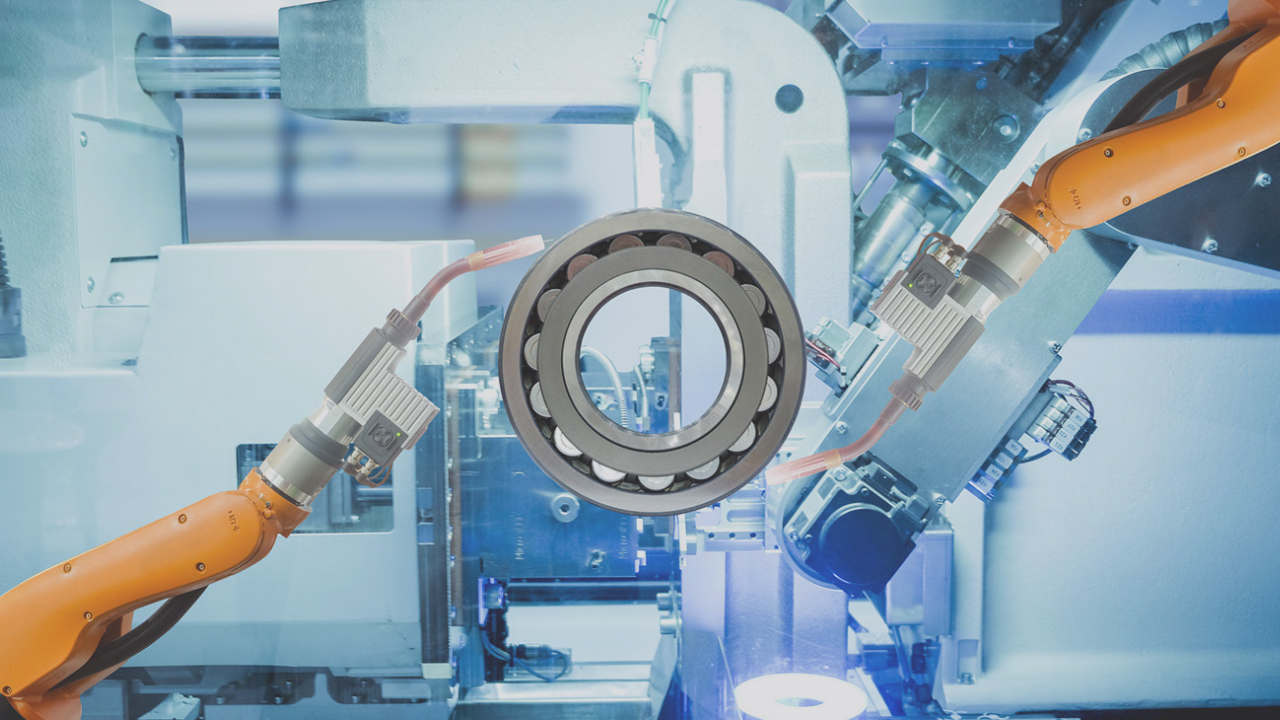
Smart Manufacturing Solutions Abound
So what exactly are these advanced automation technologies we’re talking about when we discuss smart manufacturing? The report summarizes a set of ten smart manufacturing solutions manufacturers are adopting:
- Smart Devices
“Smart devices are self and system-aware assets that acquire and process operating data – and monitor and report on asset conditions such as self-diagnostics and energy usage.”
- Manufacturing Execution Systems (MES)
“Manufacturing Execution Systems (MES) track and document the transformation of raw materials into finished goods, providing real-time production management to drive enterprise-wide compliance, quality, and efficiency.”
- Quality Management Systems (QMS)
“Quality Management Systems (QMS) standardize and automate quality documentation, processes, and measurements.”
- Computerized Maintenance Management Systems (CMMS)
“Computerized Maintenance Management Systems (CMMS) help organizations track and manage maintenance and repair activities for their facilities, equipment, and other assets in one place.”
- Asset Performance Management (APM)
“Asset Performance Management (APM) combines process, operational, and machine-level data through dashboards to monitor machine and plant health, ensuring optimal uptime, throughput, and maintenance needs.”
- Production Monitoring
“Production Monitoring provides seamless connectivity to machines on the plant floor, delivering transparent, real-time operational KPIs like OEE and dashboards to drive continuous improvements.”
- Distributed Control Systems (DCS)
“Distributed Control Systems (DCS) use decentralized elements to control dispersed systems, such as automated industrial processes or large-scale infrastructure systems.”
- Supply Chain Planning (SCP)
“Supply Chain Planning (SCP) combines data from multiple departments across the business or from outside market resources to sync demand and supply forecasting to improve inventory accuracy and production management.”
- Enterprise Resource Planning (ERP)
“Enterprise Resource Planning (ERP) automates front- and back-office processes, including financial management, revenue management, human capital, order management, billing, and inventory.”
- Analytics
“Analytics use data to solve manufacturing bottlenecks, optimize output and quality, and provide new insights.”
Contact SACA to Learn More about Smart Automation Certifications
As manufacturers incorporate these new advanced automation technologies, they’re finding they need workers with more advanced technical and technological skills than ever before. Unfortunately, there aren’t enough workers with these skills to fill the many roles available today, creating what is known throughout industry as the “skills gap.”
How can manufacturers find the highly-skilled workers they need so desperately? One promising solution is the development of industry-standard certifications that focus on connected-systems skills. The Smart Automation Certification Alliance (SACA) sits at the forefront of the effort to certify students and workers who demonstrate the required knowledge and hands-on smart automation skills employers so desperately need.
To learn more about Industry 4.0 certifications and how SACA can help both educational institutions and industry employers begin the task of bridging the Industry 4.0 skills gap, contact SACA for more information.
About Duane Bolin
Duane Bolin is a former curriculum developer and education specialist. He is currently a Marketing Content Developer for Amatrol, Inc. Learn more about Amatrol and its technical training solutions, including eLearning, here and connect with Duane on Amatrol’s Twitter, Facebook, LinkedIn, and YouTube pages.
- Published in News, Technology
SACA Certifications Approved as Industry Based Certifications for Texas High Schools
The Smart Automation Certification Alliance (SACA) is proud to announce the inclusion of SACA certifications on the latest Texas Education Agency’s (TEA) list of approved Industry Based Certifications (IBC). This will allow access for students at Texas’ 3,000+ high schools to become certified in cutting-edge Industry 4.0 competencies and prepare them for jobs in rapidly changing industrial environments. This will aid both the Texas workforce and industry in closing the skills gap that currently exists worldwide as Industrial Internet of Things (IIoT) technology continues to be adopted.
The adoption of new IBCs by the TEA is a bi-annual process and certifications must pass a rigid vetting process based around six criteria to make certain that certifications prepare students for in-demand jobs within the current workforce. The TEA ensures the relevance of these certifications by soliciting feedback from industry councils and employers. The inclusion of SACA certification will allow students to enroll in SACA-aligned programs, which will aid school districts by receiving additional funding for students who attain SACA certifications.
The TEA-approved SACA certifications include:
- Certified Industry 4.0 Associate – Basic Operations (C-101)
- Certified Industry 4.0 Associate – Robot System Operations (C-103)
- Certified Industry 4.0 Automation Systems Specialist I – Electrical Systems 1 (C-201)
- Certified Industry 4.0 Automation Systems Specialist I – Electric Motor Control Systems 1 (C-202)
- Certified Industry 4.0 Automation Systems Specialist I – Motor Control Troubleshooting 1 (C-204)
- Certified Industry 4.0 Automation Systems Specialist I – Programmable Controller Troubleshooting 1 (C-208)
- Certified Industry 4.0 Automation Systems Specialist I – Robotic Operations 1 (C-215)
- Certified Industry 4.0 Automation Systems Specialist I – Robotic System Integration 1 (C-216)
About SACA
The Smart Automation Certification Alliance (SACA) is a non-profit organization whose mission is to develop and deploy modular Industry 4.0 certifications for a wide range of industries. With the help our partners, SACA has created certifications that are industry-driven, developed for industry by industry. They are developed through a rigorous process that begins with the creation of truly international skill standards, endorsed by leading experts in Industry 4.0 technologies throughout the world.
- Published in News, Technology
Industry 4.0 Creates Need for IT & Cybersecurity Experts
The challenges facing industries across the country and around the world continue in the ongoing wake of the COVID-19 pandemic. When you add staggering inflation to supply chain disruptions, it’s no wonder companies everywhere are searching for ways to increase productivity and efficiency.
One of the primary solutions many companies are embracing is a range of advanced automation technologies collectively known as the Industrial Internet of Things (IIoT) or Industry 4.0. The shift to connected-systems technologies began well before the pandemic, but the effects of the pandemic have greatly increased the adoption rate of Industry 4.0 technologies.
Whether it’s adding robots, autonomous mobile robots (AMRs), or sensors to machines, Industry 4.0 technologies are gaining ground and making a difference. However, adoption of these new solutions can also create an entirely new set of needs that companies must address.
In this article, we’ll take a brief look at how Industry 4.0 technologies create a need for specialized IT and cybersecurity experts to oversee and manage these new solutions. We’ll also explain how the Smart Automation Certification Alliance (SACA) can help companies find the right experts with the advanced Industry 4.0 skills they need to take their businesses to the next level.
Looking to Industry 4.0 for Solutions
Regardless of your industry or the size of your company, no one has been immune from the continuing effects of the COVID-19 pandemic and the subsequent supply chain issues and rising costs associated with inflation. For many companies, it seems like it’s simply one thing after another with a new challenge arising every day.
To combat these problems, companies everywhere are searching for solutions that allow them to increase productivity and efficiency even in the midst of an extremely tight labor market. As a recent Automation.com article by Henry Martel points out, “an increasing number of [manufacturers] are embracing Industry 4.0 to bolster enterprise efficiency by making their manufacturing more aware, predictive, and autonomous.”
But what does embracing Industry 4.0 really mean, in a practical sense? Martel breaks it down for us in his article:
“The shift from Industry 3.0 to Industry 4.0 involves the convergence between information technology (IT) and operational technology (OT). Connecting OT systems to an IT network allows a more detailed view of individual equipment and creates a comprehensive view of the entire ecosystem, simplifying management and operation. Besides allowing machines to be largely operated autonomously without human supervision, Industry 4.0 creates higher value when data collected from intelligent sensors and actuators connected to equipment leads to better decision making, as well as to the ‘learning’ that’s now possible with artificial intelligence (AI) and machine learning (ML).”
For example, Martel explains that “analyzing big data collected from sensors on the factory floor provides real-time visibility of manufacturing assets to facilitate predictive maintenance in order to minimize costly downtime. In this instance, machine learning algorithms detect and target faulty parts before they wear out, rather than wait until repair work is more expensive.”
In addition to machine learning, Industry 4.0 takes advantage of artificial intelligence “to analyze sensor data to track equipment usage, improve workflows, streamline logistics, increase safety, and achieve higher overall efficiency across OT and IT operations.” In this way, “Industry 4.0 unlocks actionable data throughout the plant and beyond, improving operational awareness in manufacturing and maintenance processes.”
The benefits of these new advanced automation technologies are clear, and early adopters are seeing huge gains in both efficiency and productivity. However, these Industry 4.0 technologies do create a new need for companies: IT and cybersecurity experts that can operate, program, maintain, troubleshoot, and repair these intricate and complex systems that generate enormous amounts of data.
The Need for IT & Cybersecurity Experts
A recent Embedded article by Johan Kraft paints a clear picture of the IT and security needs created by these new “immensely complex” IIoT systems. As Kraft notes, “[o]ne of the defining features of Industry 4.0 is distributed sensing. This latest iteration of industrial automation sees a dramatic increase in the sensor nodes used to monitor equipment and processes, all linked up to gateway devices in a complex industrial internet of things (IIoT)…But this also requires more focus on the security of the network to ensure safe operation.”
Why is security such a critical issue with Industry 4.0 systems? Kraft explains: “Most industrial systems have been isolated in closed loop systems. Industry 4.0 opens these systems up to the wider Internet and higher risks of compromise.” Martel agrees:
“But just as these new technologies have created the opportunities for optimization, they have also introduced new risks and security threats, creating a completely different threat vector than PC-based networks. Industry 4.0, for all its benefits, makes ‘Industry’ an appealing target for cyber-attacks. The expanded attack surface gives bad actors the opportunity to move laterally across a network, jumping across IT and OT systems for industrial espionage, intellectual property theft, IP leakage, or even production sabotage. For this reason, cybersecurity best practices must be acknowledged as one of the pillars to a successful Industry 4.0 strategy.”
Kraft points out that security risks to industry are all too real: “The latest Pipedream malware is deliberately targeting industrial automation and SCADA systems. This does not exploit a vulnerability but uses the inherent functions of the programmable logic controller (PLCs).”
Martel sums up the need as follows:
“Before Industry 4.0, OT devices and systems were ‘air-gapped’ to isolate them from risk. That is not possible today. Industrial switches, media converters, and wireless routers must feature robust, DoD-compliant layer 2 and layer 3 security that helps manage network traffic at scale.”
How SACA Certifications Can Help Companies Find the Talent They Need
The need for advanced Industry 4.0 technologies is clear, and their benefits are many. But how can companies unfamiliar with the types of IT issues and cybersecurity concerns involved with Industry 4.0 technologies navigate their way through these obstacles?
Fortunately, they don’t have to figure everything out by themselves. The Smart Automation Certification Alliance (SACA) sits at the forefront of the effort to certify students and workers who demonstrate the required knowledge and hands-on smart automation skills employers so desperately need, including advanced IT systems and cybersecurity.
SACA’s certifications were developed in conjunction with industry partners who could speak from experience about their needs when it comes to workers able to work alongside a variety of advanced automation technologies. For example, SACA offers a Certified Industry 4.0 IT Systems Specialist certification that prepares individuals to succeed in information technology technician and engineering positions in modern production environments that use Industry 4.0 technologies.
This certification features a variety of elective micro-credentials that are ideal for individuals seeking to become versed in Industry 4.0 automation, such as: robot system operations and integration; programmable controller systems; industrial Ethernet communications; smart sensors; SCADA systems; Industry 4.0 data analytics; and industrial network security systems.
For workers, SACA certifications can help market their smart automation skills to potential employers. For those employers, SACA certifications represent confirmation that a worker has the skills to hit the ground running in the workplace.
To learn more about Industry 4.0 certifications and how SACA can help both future workers and industrial employers begin the task of bridging the Industry 4.0 skills gap, contact SACA for more information.
- Published in News, Technology
Autonomous Mobile Robots on the Rise
“Transform and roll out!” This command probably echoes in the memories of those familiar with Optimus Prime and the Autobots from the Transformers cartoons, graphic novels, and Hollywood blockbuster movies. However, it could also be the rallying cry of manufacturing workers in smart factories all around the world today.
As advanced automation technologies continue to revolutionize how modern manufacturers operate, more and more facilities have embraced the use of autonomous mobile robots, commonly known as AMRs. Unfortunately, the implementation of AMRs seems to be moving at a faster pace than manufacturers can hire workers with the skills to operate, maintain, troubleshoot, and repair them.
This disconnect between the number of open manufacturing positions and the number of highly-skilled workers available to fill them is known as the “skills gap,” and it’s at its widest in those industries adopting advanced automation technologies that need workers with advanced Industry 4.0 “connected systems” skills.
In this article, we will take a closer look at AMRs and how their increasing popularity will increase the need for workers with smart automation skills. We’ll also detail how the Smart Automation Certification Alliance (SACA) can help ensure the next generation of workers possesses the skills they will need to succeed in the modern manufacturing workplace.
What is an Autonomous Mobile Robot?
When you think of a robot, what comes to mind? For some, the word “robot” may bring to mind images of the robot maid from The Jetsons cartoon or R2-D2 from the Star Wars movies. Others may envision large, stationary robot arms welding or moving heavy equipment on an assembly line.
Not surprisingly, autonomous mobile robots or AMRs are neither of these things. According to an Intel article, an autonomous mobile robot is “a type of robot that can understand and move through its environment independently.”
Different than automated guided vehicles (AGVs), which rely upon a specific track or operator intervention, “AMRs use a sophisticated set of sensors, artificial intelligence, machine learning, and compute for path planning to interpret and navigate through their environment, untethered from wired power.”
AMRs are finding homes in a variety of industries, including “[w]arehouses, logistical companies, agriculture businesses, and healthcare institutions.” Any business could benefit from using AMRs if it’s “looking for new and innovative ways to improve operational efficiency, enhance speed, ensure precision, and increase safety.”
For example, AMRs can enhance workplace safety by performing “tasks that would be harmful to or not possible for human workers. For example, they may be used to clean and disinfect areas for improved health and safety, transport contagious laboratory specimens in hospitals, carry heavy loads in industrial environments, or work in extreme conditions where humans cannot and should not be working.”
AMRs also offer users improved efficiency and productivity. For example, “[t]o enable employees to focus on high-value activities, such as customer support, businesses often use AMRs to assist with locating, picking, and moving inventory. When productivity is key, many businesses turn to low-powered AMRs that require less energy to function. Less power to operate means AMRs can recharge and return to work quicker, reducing downtime and keeping production and fulfillment going.”
What is Last-Mile Delivery?
The benefits of AMRs within a factory’s walls probably seem clear, but what about outside those walls? Can you imagine AMRs operating out in public? If that seems too much like science fiction, get ready to witness the future.
AMRs are becoming one the latest high-tech solutions to the problem of last-mile delivery. If you’re not familiar with that term, an Inside Intelligence article by Shelagh Dolan explains that “[i]n a product’s journey from warehouse shelf, to the back of a truck, to a customer doorstep, the “last mile” of delivery is the final step of the process — the point at which the package finally arrives at the buyer’s door.”
As Dolan notes, “[i]n addition to being a key to customer satisfaction, last mile delivery is both the most expensive and time-consuming part of the shipping process.” In a nutshell, “the last mile problem is inefficiency.”
For example, in rural areas, there can be multiple miles between stops. In the urban environment, however, stops may be very close together, but traffic congestion can slow the delivery process to a crawl.
Because e-commerce continues to grow year after year and consumers increasingly expect both fast and free shipping, last-mile delivery costs have grown substantially, accounting for more than half of the total cost of shipping in most cases.
This is why more and more companies are “looking to implement new technologies and drive process improvements” to solve the last-mile delivery problem. Dolan concludes that, “with the ongoing integration and enhancement of automation across industries, it’s likely we’ll start seeing delivery robots, drones, and self-driving vehicles making many of these drop-offs in the not-so-far future.”
A recent Material Handling & Logistics article echoes that conclusion: “[l]ast-mile delivery revenues [by AMRs] are forecasted to grow from $70 million in 2022 to US$670 million in 2030, according to new research from ABI Research. Additionally, the value of those parcels delivered by Autonomous Mobile Robots (AMRs) could reach $3.3 billion by 2030.”
“The use of automation will continue to grow as governments increase regulatory approvals, more companies scale revenue-producing operations, and both consumers and businesses find value in low touch, quick delivery of their items,” explains Adhish Luitel, senior analyst, Supply Chain Management & Logistics at ABI Research.
Indeed, “[a]s these autonomous vehicles grow from university campuses to the suburbs and city streets, companies will be able to judge not only their financials but also the response from the larger communities as they adjust to sharing their sidewalks, streets, and crosswalks with these efficient machines.”
With the anticipated growth of AMRs both inside and outside the walls of industrial facilities nationwide, it’s going to be more important than ever for employers to find workers with the skills to operate, maintain, troubleshoot, and repair these advanced automation technologies. That’s why industry-standard certifications addressing advanced “connected-systems” skills will be a key tool for both employers and future workers.
Why are SACA Certifications Important Today?
The Smart Automation Certification Alliance (SACA) sits at the forefront of the effort to certify students and workers who demonstrate the required knowledge and hands-on smart automation skills employers so desperately need.
SACA’s certifications were developed in conjunction with industry partners who could speak from experience about their needs when it comes to workers able to work alongside a variety of advanced automation technologies.
For example, SACA offers a wide variety of certifications in important industrial subject matter areas, including: electrical, motor control, programmable controllers, mechanical, pneumatics, hydraulics, automation, Industry 4.0 technologies, robotics, electronic sensors, smart factory operations, process control, Ethernet communications, networking, data analytics, and predictive maintenance.
For workers, SACA certifications can help market their smart automation skills to potential employers. For those employers, SACA certifications represent confirmation that a worker has the skills to hit the ground running in the workplace.
To learn more about Industry 4.0 certifications and how SACA can help both future workers and industrial employers begin the task of bridging the Industry 4.0 skills gap, contact SACA for more information.
About Duane Bolin Duane Bolin is a former curriculum developer and education specialist. He is currently a Marketing Content Developer for Amatrol, Inc. Learn more about Amatrol and its technical training solutions, including eLearning, here and connect with Duane on Amatrol’s Twitter, Facebook, LinkedIn, and YouTube pages.
- Published in News
Identifying specialists within the Industrial Internet of Things (IIoT).
Supply chain issues persist within the global manufacturing industry. Although nimble companies have found ways to navigate the issues brought about by COVID19, experts still anticipate concerns continuing through 2022, caused by the lingering effects of the pandemic and other global events.

One of the most pervasive issues stems from the reality that domestic manufacturing relies heavily on components made in other countries. While efforts are being made to mend this, in particular attempts to re-instate the component manufacturing industry in the US, it’s clear that this industry will reemerge in a different way with a focus on mechanization and automation.
The foundation of a long term strategy to mitigate these problems in the future will involve leveraging the Industrial Internet of Things (IIoT), which presents a groundbreaking opportunity for data capture at each step of a manufacturing process.
This extensive study by Inmarsat indicates that many manufacturing companies are either already using or anticipate using IIoT to enhance their productivity. A smart factory can track all elements of the production chain and communicate information and even anticipations within the network.
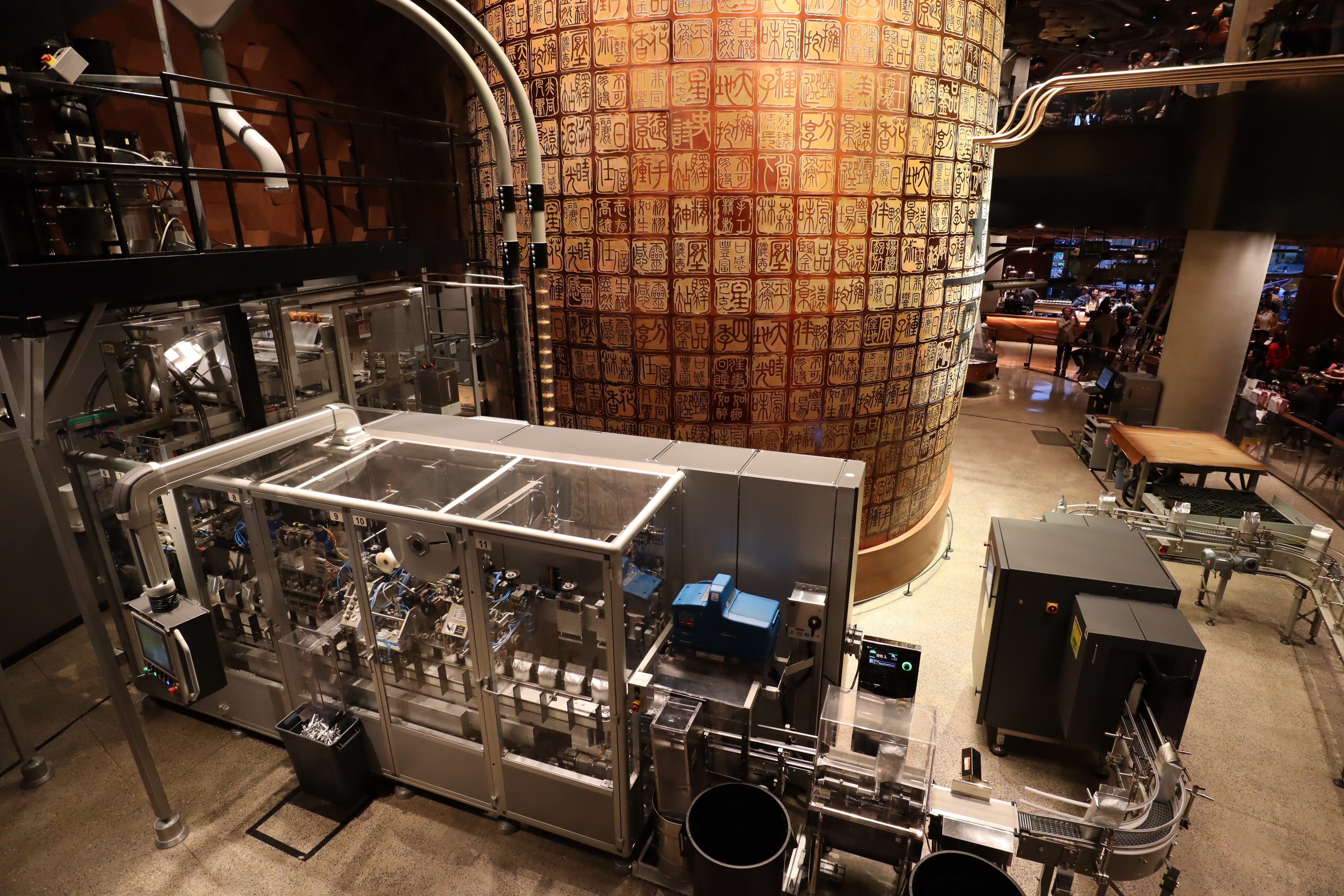
In addition to valuably capturing data, a smart-automation chain can perform pre-emptive actions based on the needs of the incoming workload; for example submitting a work-order for components required on the production line, utilizing a company’s secure industrial WLAN.
Unlike residential (or office) WiFi, an industrial system transfers small amounts of data, and as such requires a small amount of power but must remain uninterrupted. Knowledge of the specificities of these systems is essential to optimize an efficient order-to-customer pipeline.
Because of innovations like re-programmable robots and even rent-a-bot companies emerging, there is much less danger of expensive built-in obsolescence and more opportunity for network, automation and programming specialists within manufacturing companies.
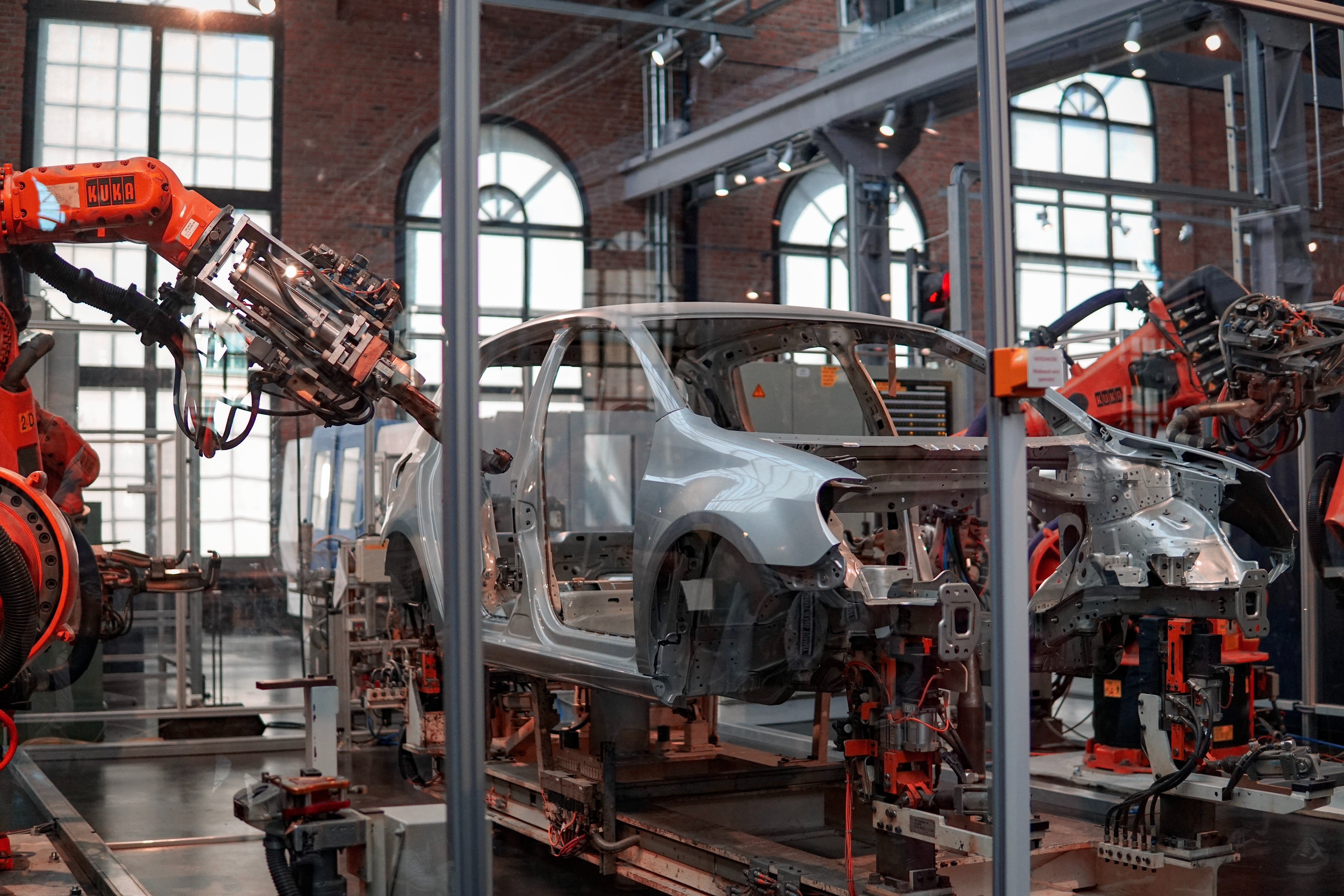
Companies searching for highly-skilled workers to ease their supply chain disruptions want to make sure that potential employees actually have the skills to excel without significant additional training. That’s why industry-standard certifications are important for supply chain workers. They provide employers with evidence that a worker has the knowledge and hands-on skills to work with today’s advanced technologies.
Industrytoday.com states that ‘new developments in automation are allowing small manufacturers to meet demand while helping with American competitiveness’. Today’s workers need more advanced technical and technological skills than ever before. Unfortunately, there aren’t enough workers with these skills to fill the many roles available today, creating what is known throughout industry as the “skills gap.” Modern businesses must ensure that their workers have up-to-date, relevant accredited skills. How can companies be sure that their employees are at the correct skill-level?
The Smart Automation Certification Alliance (SACA) focuses on connected-systems skills and leads the effort to certify students and workers who demonstrate the required knowledge and hands-on smart automation skills employers so desperately need. SACA professional development opportunities provide extensive training courses to equip teachers to promote Industry 4.0 certifications. These professional development opportunities are offered throughout the year at regional centers. Courses last 3-5 days each. Upon successful completion of each course, teachers will be certified in the process of examining students for a given credential and administrating a certification preparation course.
To learn more about Industry 4.0 certifications and how SACA can help both educational institutions and industry employers begin the task of bridging the Industry 4.0 skills gap, contact SACA for more information.
Header Photo by Denny Müller on Unsplash
- Published in News
Wearables Leverage Smart Technologies to Improve Safety and Productivity
Long, long ago, in a land that time has forgotten, there used to live human beings who were not connected to the Internet 24/7. They did not carry a telephone, camera, calculator, newspaper, encyclopedia, radio, calendar, clock, map, photo album, and book simultaneously on their persons.
What a dumb world they lived in! Does that sound harsh? Maybe, but what else would you call the opposite of the “smart” world we live in today? The example above seems silly, but 30 years ago the thought of having access to all those things — and more! — in the palm of your hand would’ve seemed just as crazy.
Today, smart technology is everywhere you look. It’s in our smartphones and other electronic gadgets. It’s in our homes and schools. We’re even wearing smart technology these days. From smart watches to fitness trackers, “wearables” are more popular than ever.
While many of the first uses of smart technologies in wearables focused on improving personal physical fitness, clever developers have created new devices for the workplace. If your workplace doesn’t already use some form of wearables for employees, it likely could in the near future.
In this article, we’ll take a closer look at the important role wearables are playing in today’s advanced manufacturing and logistics workplaces. Read on to learn how smart technologies are making employees safer and workplaces more productive and efficient.
What are Wearables?
According to Investopedia:
“Wearable technology, also known as ‘wearables,’ is a category of electronic devices that can be worn as accessories, embedded in clothing, implanted in the user’s body, or even tattooed on the skin. The devices are hands-free gadgets with practical uses, powered by microprocessors and enhanced with the ability to send and receive data via the Internet.”
When you hear the word “wearables,” smart watches and fitness trackers you wear around your wrist are probably the first devices that come to mind. However, as the definition above reveals, developers are becoming more and more creative when it comes to wearable technology.
Having access to your smartphone features on your watch and keeping track of the number of steps you’ve taken both have obvious benefits. But what about in the workplace? Is there really a need for these types of devices on the job?

After all, aren’t robots taking over anyway? Will there even be factory jobs for people in the future? Won’t it just be all automation? While automation certainly plays an increasingly important role in modern industrial facilities, the robot takeover has been greatly exaggerated.
Sure, some low-skill positions have been eliminated by the use of robots and other automated technologies, but there are still hundreds of thousands of open manufacturing jobs that employers are having a hard time filling. Moreover, the more automation there is, the more highly-skilled workers are needed to operate, maintain, troubleshoot, and repair that equipment.
As Jessica Lin notes in a Forbes article, “we have 30 to 50 years until we reach a world of full automation. It’s very hard to replicate the flexibility, speed and dexterity of a person. That’s why Amazon has a lot of robots, but still hired more than 425,000 people this year.”
People remain key assets today more than ever. Because of their importance, employers are now leveraging smart technologies in the form of wearables designed to protect and improve the everyday work experience for employees.
How Can Wearables Improve Safety in the Workplace?
Workplace safety: it’s an issue so fundamental that we tend to overlook its importance when we focus on seemingly bigger issues, such as improving efficiency and productivity via advanced automation technologies. However, employers would be wise to engage their employees in keeping safety first and foremost in their minds.
After all, workplace injuries greatly affect the bottom line. In her article, Lin highlights the impact felt by businesses as a result of work-related injuries:
“Every year in the U.S., nearly three million workers are injured on the job. The most frequent injury across this workforce are musculoskeletal injuries, which are often caused from cumulative wear and tear of the body, along with improper body mechanics. Musculoskeletal injuries are on average the longest injury to recover from, and usually the most debilitating in the long term. These injuries have huge financial implications – $170 billion was lost on workers’ compensation in 2018, and in an industry with high turnover, this means companies are spending unnecessary time and money to replace and retain employees.”
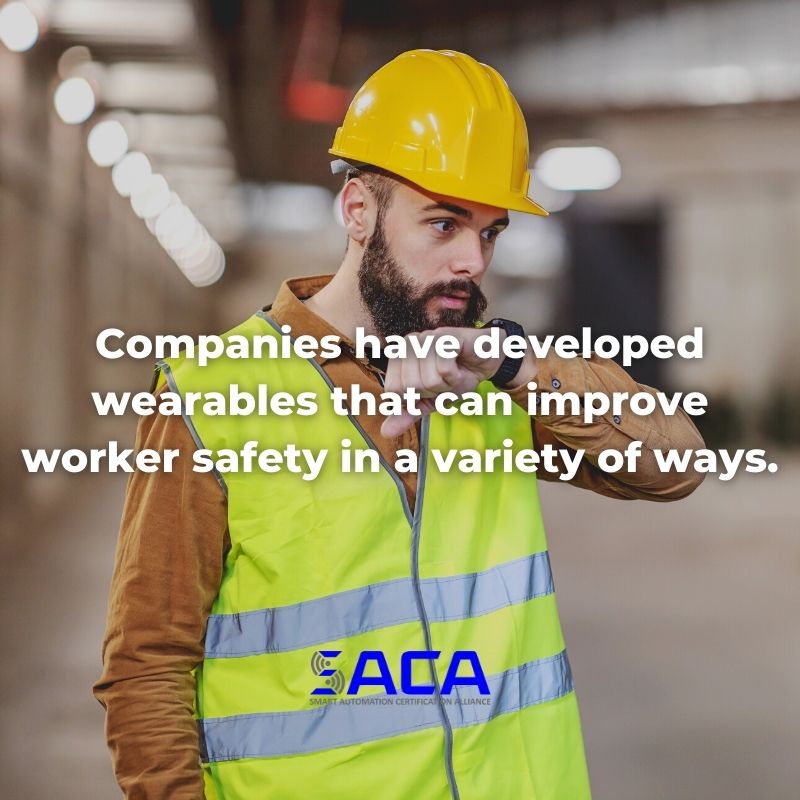
As Pat Stoik advises in an Industry Today article, “Employees are the best and first line of defense against safety incidents, which always disrupt business in some way…A well-executed safety culture not only ensures employees’ well-being, but also prevents disruptions and delays, saving companies money.”
How can companies accomplish this? One answer for food and beverage giant PepsiCo is the use of wearables. As Max Garland points out in a Food Dive article, “Frito-Lay’s need to fill 5,000 positions across its U.S. manufacturing sites to meet heightened demand has underscored the importance of keeping frontline employees healthy and able to work. Using wearables is one way to do that.”
According to Garland, “Thousands of workers at 34 Frito-Lay manufacturing and distribution centers cut back on improper lifting and posture when using Kinetic’s Reflex wearable device… [that] recognizes improper moving and lifting techniques and alerts the user with a vibration.”
In her article, Lin notes that Kinetic is “a New York-based company building wearable technology to reduce workplace injuries for industrial workers: everyone from last mile delivery drivers (who make up 40% of Kinetic wearers) to shipping, construction, manufacturing, and logistics operators.”
To date, companies using Kinetic’s wearables have experienced great success. As Garland notes, “[d]ata from the devices allowed management at Frito-Lay’s Kern Plant in California to determine what areas of the facility frequently featured improper movements…[and] to retrofit equipment and modify workspaces to reduce worker risk…reducing strain and sprain injuries by 19% YoY.”
Lin adds, “Since launching in 2014, Kinetic can now be found on tens of thousands of workers across the country, and customers include Pepsi, Iron Mountain, among others. On average, Kinetic reduces injury rates by 54%, lowers lost work days by 88%, and enables managers the insights necessary to create a safer working environment.”
Kinetic is not the only company producing wearable devices for the workplace. Many other companies have developed wearables that can improve worker safety in a variety of ways. For example, in a JourneyApps Blog article, author Leon van Heerden notes, “Wearables can now tell you which surfaces are too hot to touch, when machinery is malfunctioning, or even when conditional hazards, like spilled fluids, are present.”
Moreover, he points out that wearables can also “warn workers, and their management, when someone is physically overworking themselves and that they need to take a break before they become fatigued and make a mistake that can lead to an injury.” Importantly, improved safety isn’t the only significant impact wearables are making in the industrial workplace.
How Can Wearables Increase Productivity in Industry?
Reducing injuries and time away from the job positively impacts the bottom line, but businesses that have adopted wearables in the workplace have also learned how to use them to increase efficiency and drive greater productivity.
For example, van Heerden writes, “There are many use cases where businesses can improve efficiency: technicians can be connected to vital information about the equipment they are servicing; field workers can be given access to information on inspections; employees can be tracked in challenging environments.”
He adds, “Workers in the field, factory, or warehouse can now access information through wearables, often replacing a touch interface with one that is voice-driven, allowing their hands to remain free for the job at hand.”
Another area in which wearables can make a huge impact is employee training. General Motors uses Google’s Glass to train new hires — hands-free and on-the-go — on an active production line. Alternatively, wearables can also be used for both “immersive task simulations” and “three-dimensional training on how various products work through the help of HMTs and assisted reality,” according to van Heerden.
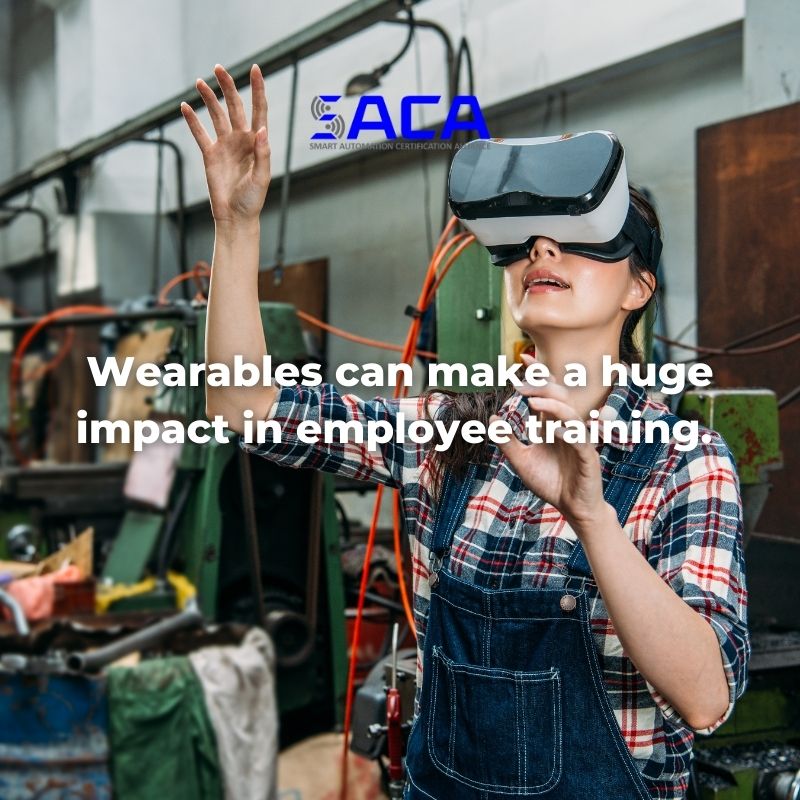
Will the trend of wearables in the industrial workplace continue? Authors like van Heerden believe it will: “Wearable technology will continue to grow within the industrial sector as it has clearly demonstrated its benefits. Productivity is increased, safety is improved, errors are reduced and training is more meaningful when wearable technology is incorporated.”
Recent research supports his view. Gartner predicts “total wearable sales of $81.5 billion in 2021, while a report by Research and Markets predicts the industrial wearable devices market will exceed $2.78 billion by 2024, increasing annually at a rate of 9.2%.” The same appears to hold true for the logistics industry: “a 2018 study logistics association MHI predicted that within five years, 70 percent of warehousing and distribution facilities would adopt wearables.”
Industry would not be seeing these benefits without the cooperation of willing employees. In his article, Garland notes that employees have readily embraced the use of wearables in the workplace, because “it empowers them to talk with management about how a facility could be improved.” As their behavior in the workplace changes in response to data gathered from wearables, employees can initiate conversations that lead to meaningful changes that improve their jobs.
Contact SACA to Learn More about Smart Automation Certifications
Wearables are just one of the many forms of new advanced, “connected” technologies that characterize what’s commonly known as Industry 4.0. These technologies, as a group, also go by a variety of monikers, including Smart Factory and the Industrial Internet of Things (IIoT).
Today’s workers need more advanced technical and technological skills than ever before. Unfortunately, there aren’t enough workers with these skills to fill the many roles available today, creating what is known throughout industry as the “skills gap.”
How can modern businesses find the workers they need? How will educational institutions teach the skills modern industry needs? These are questions that demand answers, and one promising solution is the development of industry-standard certifications that focus on connected-systems skills. The Smart Automation Certification Alliance (SACA) sits at the forefront of the effort to certify students and workers who demonstrate the required knowledge and hands-on smart automation skills employers so desperately need. To learn more about Industry 4.0 certifications and how SACA can help both educational institutions and industry employers begin the task of bridging the Industry 4.0 skills gap, contact SACA for more information.

- Published in News
SACA Certifications: Industry’s Missing Link to Solve the Skills Gap
It’s no secret that industries of all kinds are battling a serious supply and demand issue. Due to advancing technology and increasing use of automation, employers need more highly-skilled workers than ever before.
Unfortunately, the supply of workers with the advanced technical and technological skills employers need isn’t keeping pace. This well-known problem is known as the “skills gap.” It’s been a problem for a while now, and experts believe it will only get worse in the near future.
What employers need are workers with advanced “connected systems” skills that will help them operate, maintain, troubleshoot, and repair the automation equipment becoming commonplace in facilities that have adopted new Industry 4.0 technologies.
To date, however, industry and educators alike have been missing the key to solve this skills gap: a set of industry-defined and industry-validated standards that clearly define the skills workers will need to succeed in the jobs of the present and future.
Providing that missing link was the guiding vision behind the creation of the Smart Automation Certification Alliance (SACA). In a recent webinar (“SACA Webinar”) hosted by Matt Kirchner, President of Lab Midwest, representatives of several major manufacturers spoke about their role in the development of SACA’s Industry 4.0 skill standards, as well as how those standards are now guiding their training and education efforts.
SACA’s Vision for Industry 4.0 Certifications
Why are SACA’s Industry 4.0 certifications so valuable? They speak to the in-demand skills that employers across the country — and across the globe — need so desperately.
Not only do the nation’s educational institutions need to build a pipeline of skilled talent to supply employers with the highly-skilled workers they need now and in the future, but incumbent workers also need training to learn the new skills they need to work with the advanced Industry 4.0 automation systems taking over modern manufacturing facilities.
But what are those skills? That’s the key question, and answering that question is what brought SACA into existence. According to SACA’s Executive Director, Jim Wall:
“SACA’s vision from the beginning was to develop a system that’s based upon industry-developed, industry-validated standards that truly define the competencies, performance indicators, and knowledge indicators that are required of individuals to succeed in the world of Industry 4.0.”
To turn that vision into reality, SACA relied upon a wide variety of companies, educational institutions, and organizations to develop, review, and test SACA certification standards. Experts from well-known industry leaders, such as Rockwell Automation, FANUC, Ashley Furniture, Kohler, Foxconn, Boeing, and Hershey, were instrumental in making sure SACA’s Industry 4.0 certifications reflect the competencies that industry needs.
Industry 4.0 is Here to Stay
Several of the industry representatives who shared stories during the SACA Webinar spoke about the changes that Industry 4.0 technologies have wrought and how their companies have been forced to respond.
Al Doty, Advanced Manufacturing Chief Engineer for Harley-Davidson, Inc., revealed that automation has been key to his company maintaining a competitive edge. Not only do new technologies improve efficiency and reduce costs, but Doty noted that employees also expect the company to adopt and use the best technologies available, so that they can perform their jobs more effectively and maintain a positive work-life balance.
Specific new technologies being adopted include advanced robotics and digital twins, according to Scott Theune, President of Plexus. Digital twins are realtime digital counterparts that allow workers to troubleshoot equipment virtually.
In addition to improving efficiency, these new technologies also play a critical role in making manufacturing facilities safer. Improved safety has been a big benefit as industry growth and the skills gap has spurred the need for more automation, noted Andrew Martin, Senior Director of Manufacturing for Generac.
Leaders throughout industry agree: Industry 4.0 is here to stay. According to Michael DeBroux, Senior Mechanical & Automation Engineer and Engineering Supervisor of Greenheck Fan Corporation, “We need to make sure that we are getting personnel and new talent into our company that speaks modern manufacturing languages and is familiar with Industry 4.0 fundamentals.”
OT and IT are Converging in Industry 4.0
According to an i-SCOOP article, “It’s impossible to talk about the evolutions in manufacturing, industrial transformation and Industry 4.0, innovations in areas such as Industrial IoT without mentioning the convergence of IT and OT.”
Historically, operational technology (OT) has referred to “a category of computing and communication systems to manage, monitor and control industrial operations with a focus on the physical devices and processes they use.”
Information technology (IT), on the other hand, “is about business and enterprise systems that store, process and deliver information.” Because Industry 4.0 technologies are becoming more and more commonplace throughout traditional OT equipment, cybersecurity becomes more critical every year.
According to Jim Molter, IT Manager – Smart Factory Deployment of Kohler Co., “Industry 4.0 is forcing us to break down those silos and start to learn to work together…that’s where we’re headed. There’s not going to be a distinction [between OT and IT] anymore.”
Educational Institutions Play a Key Role in Preparing Industry 4.0 Workers
When experts evaluate strategies for bridging the skills gap, it’s clear that educational institutions must play a key role in preparing students for Industry 4.0 careers. But can they do it alone?
The answer is no. Educational institutions must partner with industry counterparts to ensure that the knowledge and skills they’re teaching will produce students with the valuable skills that industries around the country need.
Anne Troka, Community Engagement Manager for Sargento Foods Incorporated, explains a successful approach she helped to develop called Manufacturing 4.0:
“We started conversations with…four schools and four businesses [to] build a partnership to help students — our future workforce — connect with our businesses to really get skills that we need and skills that the students will need…to make them employable in a variety of different careers, because Manufacturing 4.0 is in manufacturing as well as many other industries.”
To date, the partnership has helped to design and build five courses to prepare students for Industry 4.0 careers, including subject areas like mechatronics, industrial controls, robotics, and the Internet of Things. Eventually, students will also be able to earn SACA certifications related to their coursework. In this way, “we’re really connecting education to [career] success,” concludes Troka.
Industry 4.0 Also Requires Upskilling Current Employees
Unfortunately, employers can’t wait for the next generation of highly-skilled workers to emerge from high school or college. As Anthony Ebio, Director of Industry 4.0 Learning for Ashley Furniture Industries, Inc., noted, schools simply aren’t “cranking out the learning and the students fast enough.”
That’s why Ashley Furniture has invested heavily in upskilling its current employees so that they have the advanced skills they need to work with new Industry 4.0 technologies. Ebio noted that they used SACA certifications as a guide when setting up training for incumbent workers: “We found ourselves leveraging a lot of the SACA structure to make sure that we have [curriculum] to support Industry 4.0.”
Other companies are following suit. Ken Evans, Associate Maintenance Manager for S.C. Johnson & Son, Inc., noted that S.C. Johnson has partnered with Gateway Technical College to upskill its employees with an eye toward achieving SACA certifications.
So far both young and older employees have been excited about the prospect of learning and gaining new skills. Plus, using SACA certifications as a guide has allowed current employees to see a payoff for their hard work quickly. According to Evans, “under SACA, [current employees] can get incremental steps of recognition and be proud of it, and we’re proud of them.”
SACA Brings It All Together
If the current skills gap plaguing industries across the world is to be bridged, strategic partnerships between industry and educational institutions must be forged. Schools must begin to produce a pipeline of highly-skilled workers ready to work in an Industry 4.0 environment.
Likewise, industry must upskill its current workforce with the advanced skills needed to operate, maintain, troubleshoot, and repair the Industry 4.0 automation technologies taking over the factory floor.
According to Michael Cook, Director of Global Academic Partnerships for Platinum SACA Sponsor Rockwell Automation, Inc., “no one company can really do this alone…SACA is providing significant leadership here…ensuring that there’s a close fidelity between the academic space as well as what we find relevant in industry. That alignment is a significant part of what SACA brings.”
To learn more about Industry 4.0 certifications and how SACA can help both educational institutions and industry employers begin the task of bridging the Industry 4.0 skills gap, visit the SACA website and then contact SACA for more information.
- Published in News
- 1
- 2












